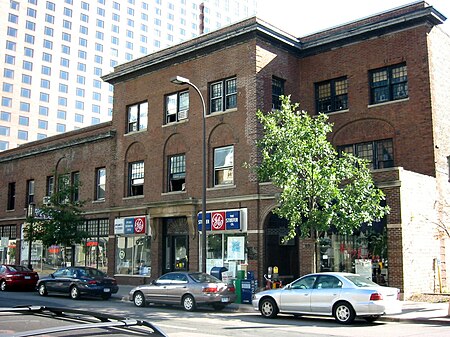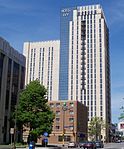Handicraft Guild Building

The Handicraft Guild Building is located at 89 10th Street South, Minneapolis, Minnesota, United States. It was designed in 1907 by architect William Channing Whitney in the Georgian Revival/Arts & Crafts style to house The Handicraft Guild. An addition to the Handicraft Guild was designed in 1914 by architects Edwin Hawley Hewitt and Edwin Brown at 1000-1006 Marquette Avenue South Minneapolis, Minnesota. It was protected in 1998 by the Minneapolis Heritage Preservation Commission despite attempts by condominium developers to tear the building down. The building houses The Handicraft Guild; founded in 1904, an artist collective and gallery space, and prominent in the Arts in Minneapolis scene. Early 1900s Arts and Crafts movement tile work can be found in suites throughout the building.
Excerpt from the Wikipedia article Handicraft Guild Building (License: CC BY-SA 3.0, Authors, Images).Handicraft Guild Building
Marquette Avenue South, Minneapolis
Geographical coordinates (GPS) Address Website Nearby Places Show on map
Geographical coordinates (GPS)
| Latitude | Longitude |
|---|---|
| N 44.973333333333 ° | E -93.273611111111 ° |
Address
City Club Apartments
Marquette Avenue South 1000
55402 Minneapolis
Minnesota, United States
Open on Google Maps







